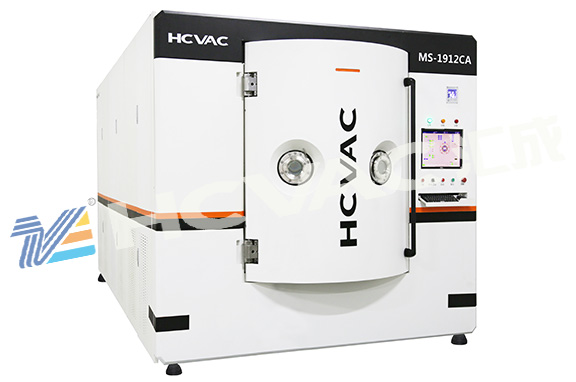The pvd coating machine uses an orthogonal magnetic field in a vacuum state to bombard the argon gas with electrons to form argon ions, which then bombard the target. The target ions are deposited on the surface of the workpiece to form a film. In this way, car lamp coating machine manufacturers should consider three aspects related to the uniformity of film thickness: vacuum state, magnetic field, and argon gas. The vacuum state needs to be controlled by the air extraction system. Each air extraction port must be opened at the same time and with the same intensity, so that the uniformity of air extraction can be controlled. If the air extraction is uneven, the pressure in the vacuum chamber will not be uniform. Pressure has a certain influence on the movement of ions.

(1) Environmental requirements of vacuum coating.
Cleaning the surface of the substrate (substrate) in the vacuum coating process is very important. Before the substrate enters the coating chamber, careful pre-plating cleaning should be carried out to achieve the purpose of degreasing, decontaminating and dehydrating the workpiece.
Substrate surface contamination comes from various dusts, lubricating oils, machine oils, polishing pastes, greases, sweat stains and other substances adhered to parts during processing, transportation, and packaging; oxide films generated on the surface of parts in humid air; absorption and Adsorbed gas. Vacuum coating manufacturers can basically use degreasing or chemical cleaning methods to remove these contaminants.
Clean surfaces that have been cleaned cannot be stored in an atmospheric environment. They must be stored in closed containers or cleaning cabinets to reduce dust contamination. Storage of glass substrates in freshly oxidized aluminum containers minimizes the adsorption of hydrocarbon vapors. Because these containers preferentially adsorb hydrocarbons. For highly unstable surfaces that are sensitive to water vapor, they should generally be stored in a vacuum drying oven.
Clearing the dust in the coating room, setting up a high-cleanliness workshop, and maintaining a high degree of indoor cleanliness are the basic environmental requirements of the coating process. In areas with high air humidity, in addition to carefully cleaning the substrate and components in the vacuum chamber before plating, baking and degassing are also required. To prevent oil from being brought into the vacuum chamber, pay attention to the return of oil from the oil diffusion pump. Oil-blocking measures must be taken for diffusion pumps with high heating power.
(2) Basic principles of coating and coating
A. Raw materials and basic principles:
The raw materials are resin, polymer, Teflon, silicone, acrylic acid, silicate, etc. The excipients, formulas and measurements are different. For example, if the added emulsifier is mixed in different amounts, the emulsified state will be different. Watery, milky, and pasty can all be achieved. After these substances are emulsified and demulsified, they partially penetrate or form a film.
B. Features and differences of pvd coating machines:
Pvd coating machine coating: good penetration performance (depending on the particle size of the raw material), better surface smoothness, suitable for Europe and the United States where the paint surface has more "pores", is rough, has been repainted, and the paint surface itself is hard and needs to increase the brightness. Car paint is more suitable.
Pvd coating machine coating: The coating product adds film-forming aids and curing agents, and the vacuum coating manufacturer makes it form a film instantly, and the properties change accordingly.



